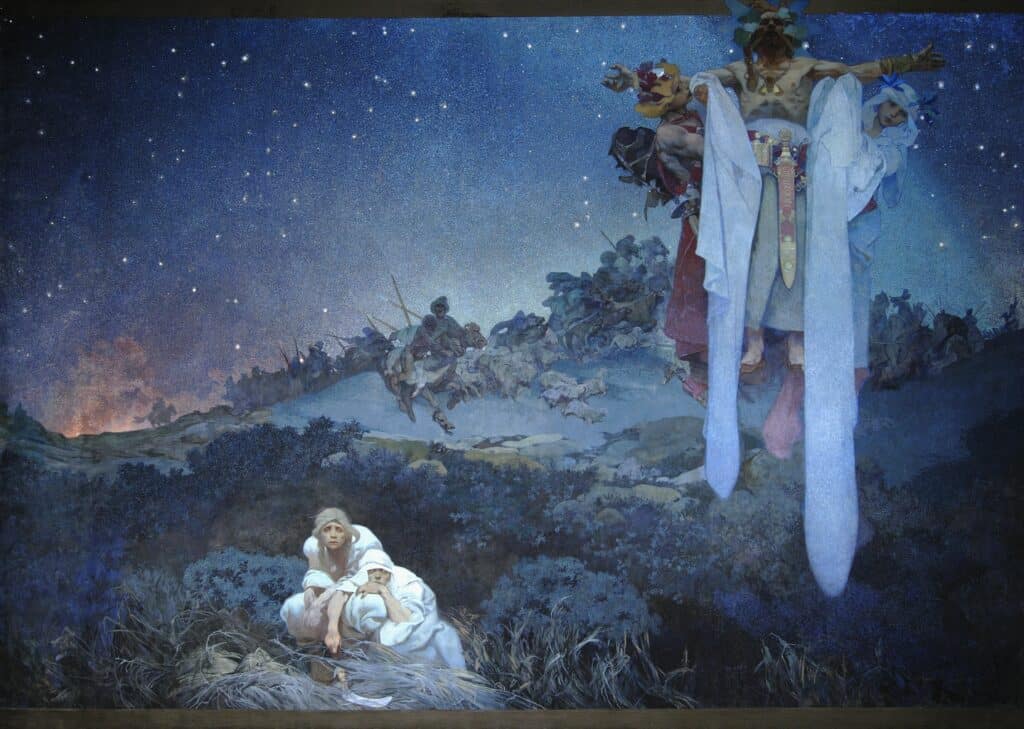Slavs in the Motherland
The Slavic homeland was situated in marshy lands stretching from the Baltic to the Black Sea. Around the rivers Vistula, Dnieper, Dniester and Western Dvina lived small families and larger tribes - Venedes, Ants, Sklavens. They lived by hunting and agriculture. Their property, and they themselves, were tempting prey for nomadic tribes from the east and south - Turanians and Sarmatians. They were often attacked from the north and west by the Goths. They built their settlements in the marshes, which protected them from raiders.
The image is of a clear night full of stars. In the left rear, a Slavic village is burning and has been overrun by a horde of nomads. The savage nomads have slaughtered the old and infirm villagers, taking their flocks, as well as the young people they sell into slavery. There was a large slave market at the Black Sea town of Kherson, and there the captives were sold at a bargain.
In the lower part of the painting, a couple - a man and a woman - are huddled together, the only ones who saved their lives that night. Their eyes radiate terror and horror. Into the fear that presses them both down, hatred, the desire for revenge, but also the wish to live in peace and tranquillity, creeps ever stronger. These feelings take on a real form, rising up to the stars and symbolically materializing in the figure of the gentile - an Old Slavic priest, begging the gods for help.
His right hand is supported by an armed young man in red - a symbol of war, the left by a girl in white - a symbol of peace.
The image expresses the idea that struggle must be defended, but that we can only thrive and prosper in peace. It is an introduction to the whole cycle because it shows the conditions from which the Slavs emerged and what actions they are capable of in the future.
Vitte App/GN.CZ-Jana Černá_07
https://mk-epopej-pruvodce.netlify.app/dospely/1



